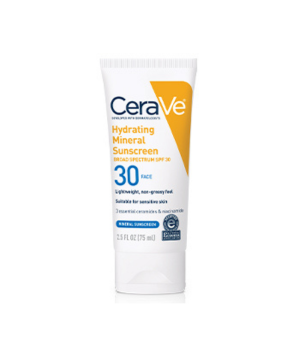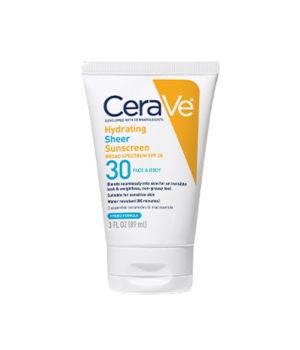Zinc Oxide
TYPE OF INGREDIENT
Mineral
COMMONLY FOUND IN
Sunscreens, diaper rash creams
WHAT ARE THE BENEFITS OF ZINC OXIDE?
Zinc oxide is a versatile mineral ingredient that offers a range of benefits for skincare and health. One of its primary functions is as a physical sunscreen agent, providing broad-spectrum protection against both UVA and UVB rays. This makes it an essential component of many sunscreens, helping to shield the skin from sun damage and reduce the risk of skin cancer and premature aging.
Apart from its sun-protective properties, zinc oxide also possesses soothing and calming effects, making it beneficial for sensitive or irritated skin.
Furthermore, zinc oxide is renowned for its ability to act as a barrier on the skin, forming a protective layer that helps to prevent moisture loss and shield against environmental aggressors. This barrier is especially valuable in intertriginous areas (axillae, inner thighs and breast area), which can be prone to fungal infections. Zinc oxide is also useful in products like diaper rash creams, where it creates a barrier against irritants while promoting healing.
WHAT IS ZINC OXIDE?
Zinc oxide is a white, powdery mineral compound derived from zinc, a naturally occurring element. It is produced by oxidizing zinc metal, resulting in fine particles that can be incorporated into various skincare and cosmetic formulations. Due to its low reactivity and compatibility with other ingredients, zinc oxide is widely utilized across different industries, including pharmaceuticals, cosmetics and textiles.
In skincare products, zinc oxide is valued for its non-comedogenic properties, meaning it does not clog pores or exacerbate acne. This makes it suitable for individuals with oily or acne-prone skin who may struggle with other types of sunscreens or skincare ingredients.
IS ZINC OXIDE SAFE FOR ALL SKIN TYPES AND TONES?
Zinc oxide is generally considered safe for all skin types, including sensitive and acne-prone skin. Its gentle nature and low risk of irritation make it a popular choice for individuals with delicate or easily aggravated skin. Additionally, zinc oxide is non-irritating and non-sensitizing, making it suitable for use on a wide range of skin tones without causing discoloration or other adverse effects.
CONTRAINDICATIONS
While zinc oxide is considered safe for most individuals, there are a few rare contraindications to be aware of. Some people may experience allergic reactions or skin sensitivities to zinc oxide, although these instances are uncommon. Additionally, individuals with specific skin conditions or allergies should consult with a dermatologist before using products containing zinc oxide to ensure compatibility and minimize the risk of adverse reactions.
Sources:
Lyons AB, Trullas C, Kohli I, Hamzavi IH, Lim HW. Photoprotection beyond ultraviolet radiation: A review of tinted sunscreens. J Am Acad Dermatol. 2021 May;84(5):1393-1397.
Dall’Oglio F, Musumeci ML, Puglisi DF, Micali G. A novel treatment of diaper dermatitis in children and adults. J Cosmet Dermatol. 2021 Apr;20 Suppl 1(Suppl 1):1-4.
Verzì AE, Nasca MR, Dall’Oglio F, Cosentino C, Micali G. A novel treatment of intertrigo in athletes and overweight subjects. J Cosmet Dermatol. 2021 Apr;20 Suppl 1(Suppl 1):23-27.
Tan YY, Wong LS, Nyam KL, Wittayanarakul K, Zawawi NA, Rajendran K, Djearamane S, Dhanapal ACTA. Development and Evaluation of Topical Zinc Oxide Nanogels Formulation Using Dendrobium anosmum and Its Effect on Acne Vulgaris. Molecules. 2023 Sep 22;28(19):6749.







